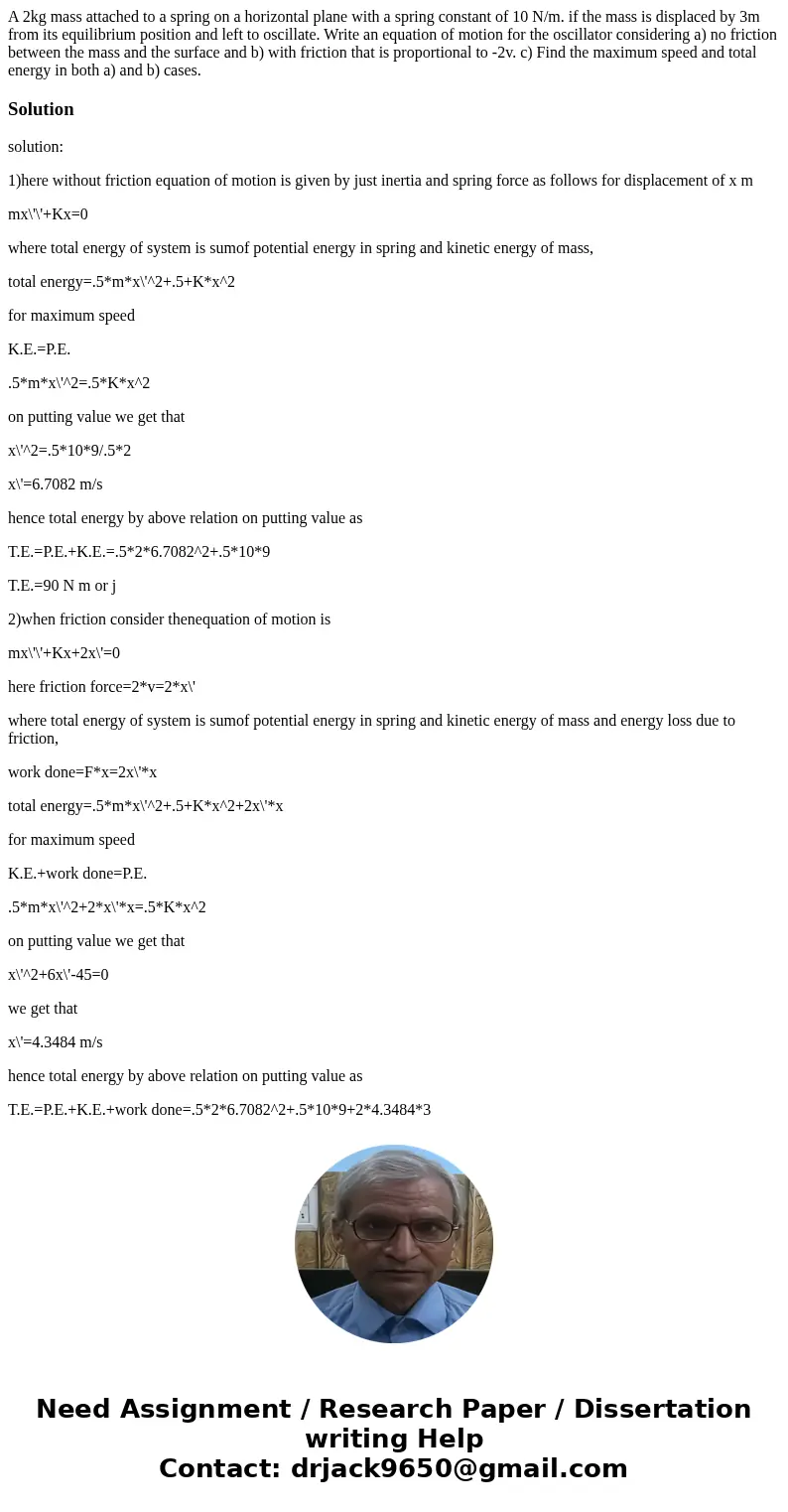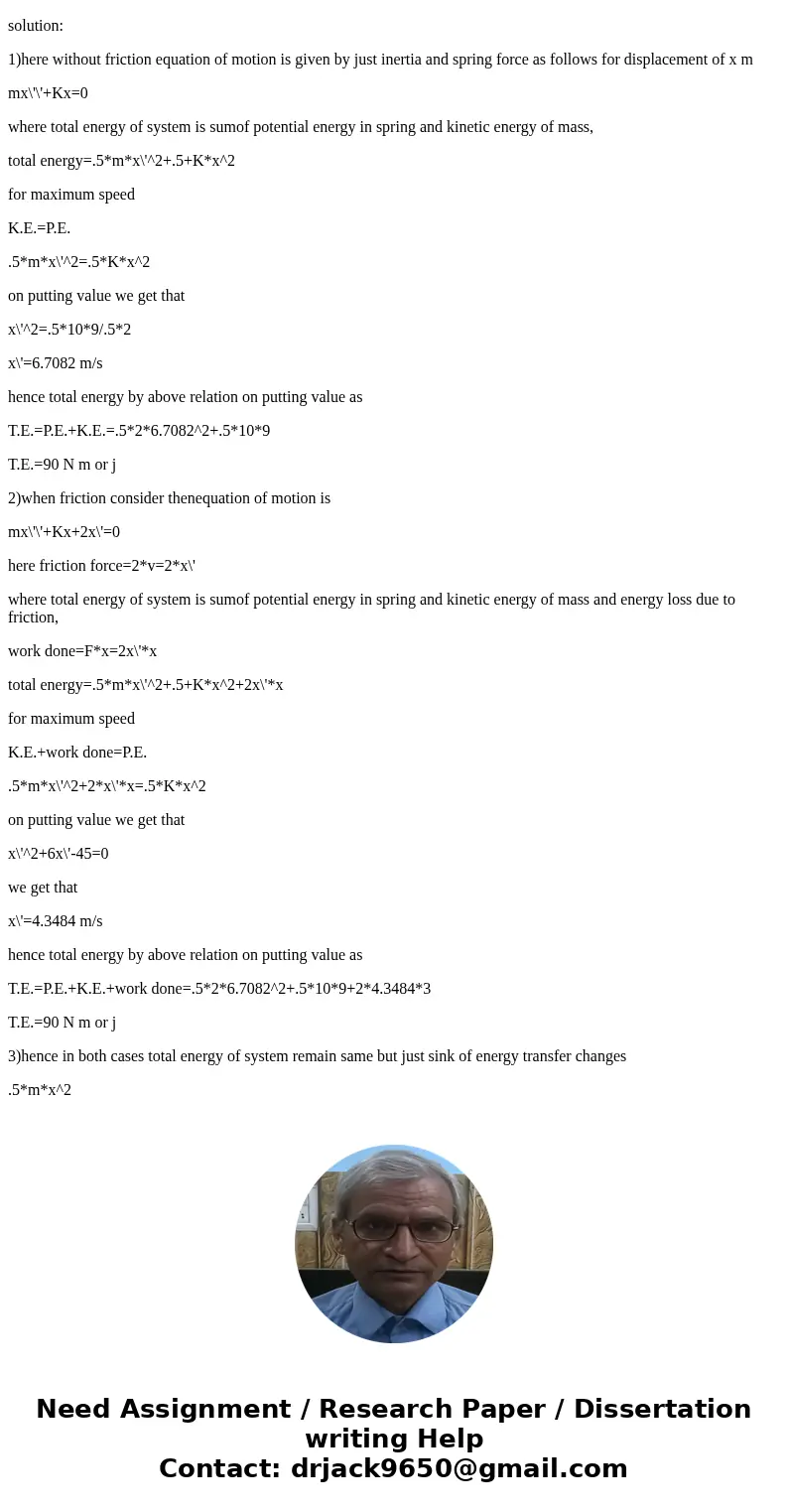A 2kg mass attached to a spring on a horizontal plane with a
Solution
solution:
1)here without friction equation of motion is given by just inertia and spring force as follows for displacement of x m
mx\'\'+Kx=0
where total energy of system is sumof potential energy in spring and kinetic energy of mass,
total energy=.5*m*x\'^2+.5+K*x^2
for maximum speed
K.E.=P.E.
.5*m*x\'^2=.5*K*x^2
on putting value we get that
x\'^2=.5*10*9/.5*2
x\'=6.7082 m/s
hence total energy by above relation on putting value as
T.E.=P.E.+K.E.=.5*2*6.7082^2+.5*10*9
T.E.=90 N m or j
2)when friction consider thenequation of motion is
mx\'\'+Kx+2x\'=0
here friction force=2*v=2*x\'
where total energy of system is sumof potential energy in spring and kinetic energy of mass and energy loss due to friction,
work done=F*x=2x\'*x
total energy=.5*m*x\'^2+.5+K*x^2+2x\'*x
for maximum speed
K.E.+work done=P.E.
.5*m*x\'^2+2*x\'*x=.5*K*x^2
on putting value we get that
x\'^2+6x\'-45=0
we get that
x\'=4.3484 m/s
hence total energy by above relation on putting value as
T.E.=P.E.+K.E.+work done=.5*2*6.7082^2+.5*10*9+2*4.3484*3
T.E.=90 N m or j
3)hence in both cases total energy of system remain same but just sink of energy transfer changes
.5*m*x^2


 Homework Sourse
Homework Sourse